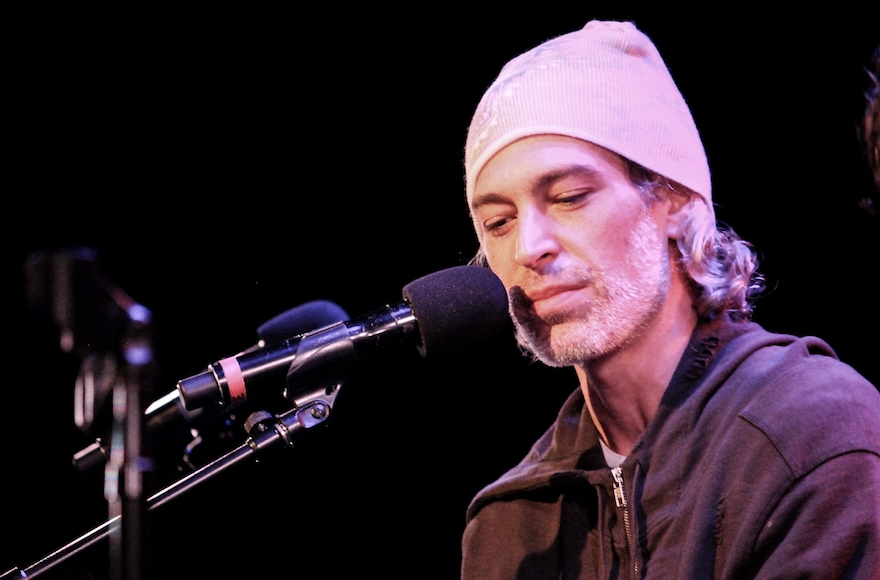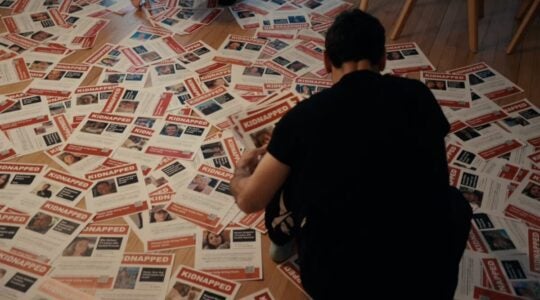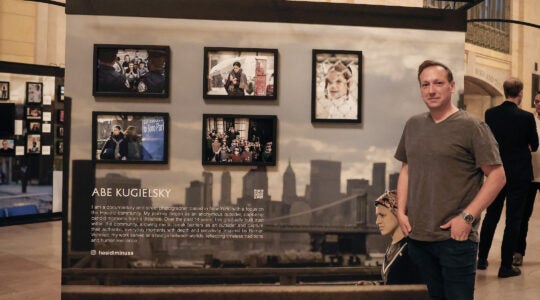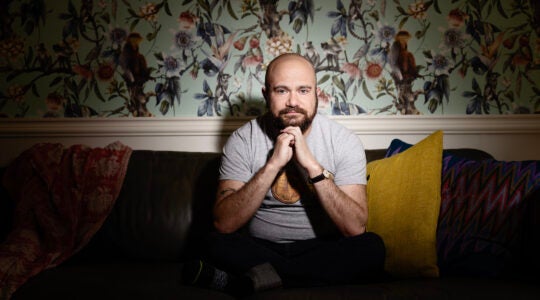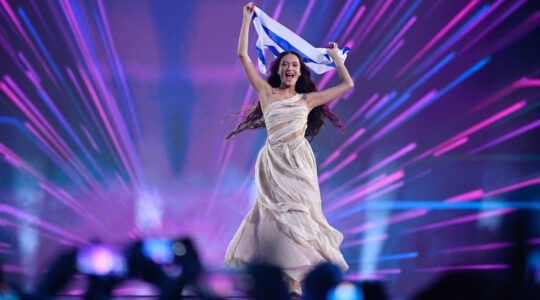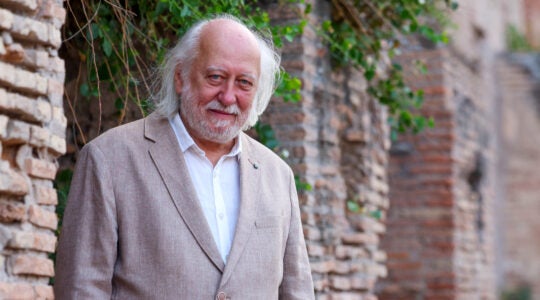Matisyahu’s personal and religious journey — from non-religious stoner teen to Hasidic reggae rocker to non-Orthodox Jewish symbol — has been tracked closely in the media.
On Friday night, the Jewish reggae star sat down to tell his story in his own words, no holds barred. He spoke with Brooklyn Rabbi Dan Ain and Relix magazine editor Mike Greenhaus at Le Poisson Rouge in Manhattan’s Greenwich Village for the second installment of their Friday Night Jam series — which features Jewish musicians willing to talk about their art and their spirituality.
The first speaker last month was Ryan Miller, the lead singer of Guster; the next musician lined up is Lenny Kaye, the longtime guitarist of Patti Smith’s band.
After a Shabbat candle blessing and a short meditation session, Matisyahu began drinking red wine and opening up. He answered questions about what many of his fans are most interested in: how he entered the music world as a Hasidic Jew and how he eventually left the Chabad Hasidic community.
Here are five poignant and funny stories from his reprisal of the past decade of his life.
1. His late teenage years were full of drugs and jam bands
When he was 16, Matisyahu (then Matthew Miller) went to a Phish concert in Worcester, Massachusetts, and dropped acid for the first time with some friends.
“It changed my life,” he said.
He quickly became obsessed with the jam band scene and dropped out of high school to follow Phish on a tour across the country. After trying and failing to reenroll in high school, he ended up at a rehab center in Oregon, where he first began playing open mic sets.
“I wasn’t religious but I remember drinking mushroom tea and coming out wrapped in an Israeli flag with sage burning,” he said. “I decided: I love music, I love drugs, but I sort of need to make that next step. And being who I am, I did that in a drastic way and decided okay, I need to become something.”
2. He lived with New York University’s Chabad rabbi
After moving back to New York and attending The New School, Matisyahu started going to the Carlebach Shul on the city’s Upper West Side — which, as he put it, blew his mind. He gradually started wearing tzitzit and growing out his beard. One night he got so drunk that he collapsed in a bar’s stairwell and had an epiphany that he had to change his ways.
“The next day I was in Washington Square Park and [NYU Chabad] Rabbi [Dave] Korn was there,” Matisyahu said. “He poured me a glass of vodka … and the next thing I knew I was married with three kids in Crown Heights.”
What he really did next was move in with Korn’s family and begin studying Torah all day, every day.
“There was a beauty to it, it was like a purification in some sense. And there was also a complete psychosis to it, where I completely lost touch with myself and was trying to be this other thing,” he said.
3. His first hip-hop audience was a group of Hasidic Jews in the Catskills
The entire staff and student body of the yeshiva Matisyahu had enrolled in vacationed in New York’s Catskill Mountains. At a celebration one summer night, at the urging of someone, Matisyahu stood up on a table and rapped in front of the yeshiva’s staff members and their families.
“They kind of flipped out,” he said. “And they were into it.”
He would soon be performing for larger audiences. Back in his Torah-consumed life in the city, he had a teacher — “a maniac from Russia” — who tried to “crush” any dreams he had of being a musician. He let go of his ambitions, but quietly worked on his first album, which came out in 2004.
“I let go of [the dream] and said, Whatever God wants for me. And I think that in that internal moment of letting go, I was afforded the humility for God to come and give it to me. Because when it happened, it just happened almost in a supernatural way … It was just like, OK, this is now what you’re doing. You’re going to be on Jimmy Kimmel’s show, you’re going to be at Bonnaroo … everything happened very quickly,” Matisyahu said.
4. He got his beard shaved at Supercuts
Fast-forward several years and hundreds of thousands of records sold. In the Upper West Side one day in 2011, after a session with his therapist, he decided to walk into a Supercuts salon. The only employee inside was a Hispanic woman. He told her that he hadn’t shaved his beard for 10 years. After the deed was done, the two of them cried together.
“Honestly, I really didn’t think about anybody else when I shaved. I didn’t think about what it would mean for my career or what people would think about it. I just got to the place I wanted to,” he said.
5. Now, he’s most comfortable praying with Hasidim who scream
After shaving his beard, Matisyahu began to attend a Hasidic shul in Williamsburg, Brooklyn, associated with the Karlin sect.
“The place I feel most comfortable davening is by the Hasidim who scream,” he said. “I stepped into a Karlin shul, where they’re literally pissed off and screaming at God and everybody is singing their own melody. And it’s very beautiful.”
These days, Matisyahu is still religious — and he’s looking for a new synagogue to pray at near his home in Monsey, a town in New York’s Rockland County.
“I love Hasidim, I love certain aspects of it. But when you put an idea at the top of the list and everything else falls under that, you lose track of what’s real, of humanity,” he said.
JTA has documented Jewish history in real-time for over a century. Keep our journalism strong by joining us in supporting independent, award-winning reporting.
